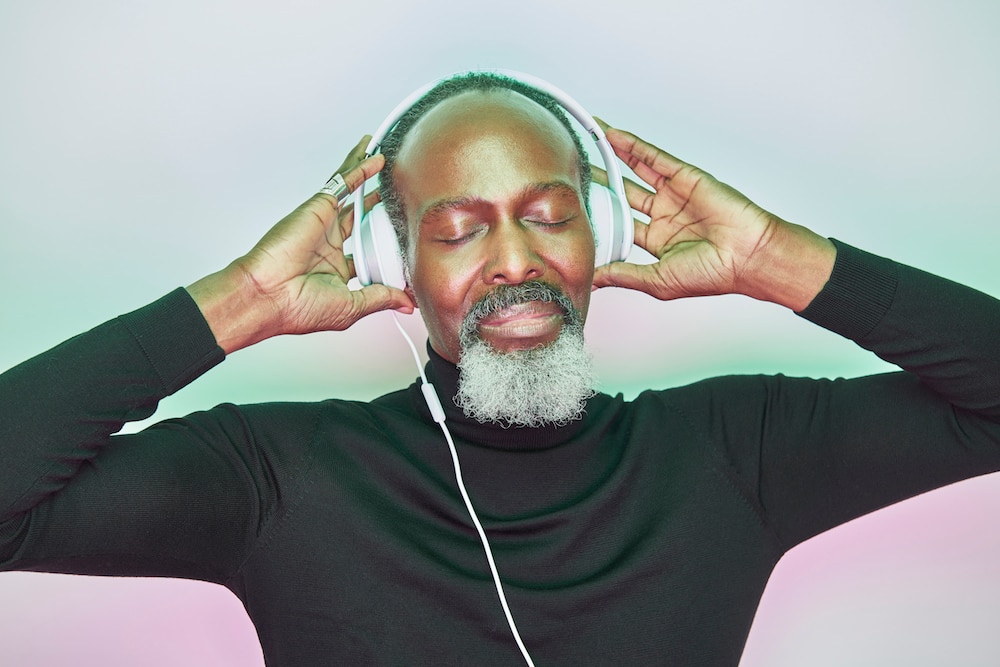Create a free profile to get unlimited access to exclusive videos, sweepstakes, and more!
Sci-fi acoustic transducer fabric lets you turn up the volume on your clothes
This gives "good vibrations" a whole new meaning.

In her book Prince Lestat and the Realms of Atlantis, the late Anne Rice envisioned a realm where people wear clothing they can listen to like headphones (or AirPods). This is no longer fiction.
Even AirPods might someday become obsolete now that a piezoelectric fabric which morphs pressure into sound waves now exists. “Piezoelectric” literally translates to a mashup of “pressure” and “electricity.” These types of materials generate voltage when an outside force bends them. Inspired by the way our own hypersensitive ears act as transducers, the fabric is able to convert one form of energy into another without acoustic hardware.
Though you can’t buy a shirt that doubles as a radio yet, researcher Yoel Fink of MIT, who coauthored a study recently published in Nature, and his research team collaborated with the Rhode Island School of Design to develop a fabric that you could someday listen to. The inverse version can even do its own listening and function as a heart monitor, among other things. It has already flown up to the ISS to detect nano-vibrations from particles of space dust.
“We observed that fibers are involved in both the front end of the eardrum and in the back end, converting the waves into electrical signals that are interpreted by the brain,” Fink told SYFY WIRE. “Fibers played a key role at both ends of the ear.”
The human ear doesn’t automatically turn pressure waves into electrical signals that reach the brain. When pressure hits, it converts pressure waves into mechanical vibrations, so the Beach Boys must have been onto something with "Good Vibrations." Flexible fibers woven into the fabric will bend under pressure. They will then transmit electrical signals saying that they were bent by something, and when these signals reach the edges of the fabric, that is when you hear something. This mimics how the inner ear acts as your own built-in acoustic device.
You might not realize it, but when you talk, you’re sending out microscopic waves. Someone else hears them. Fink wanted to see how the hearing process could be replicated by fibers. So one of his colleagues, researcher Chu Ma of the University of Wisconsin, created computer simulations of what the fabric should look like up close. This made it possible to see what would otherwise be invisible — how sound waves that the human eye is unable to detect can flow through a fabric. The qualities shown onscreen were incorporated into the design. Suddenly, the intangible became tangible.
“We had to use a very highly flexible material, and within it we needed to put something which could report on the fact that it’s bent,” said Fink. “That explains the materials we use inside the fiber, which is one of the most complex fibers ever made.”
The fabric itself incorporates an outer layer of rubbery material, but what really matters is the thin layer of piezoelectric material between that and another outer layer. Both layers on the outside conduct electricity. Wherever the fabric is bent by pressure, it will send electrical signals to the edges, where they can be measured. It not only captures sounds from the nearly imperceptible to the obviously loud, but can figure out where that sound is coming from. What is even more amazing is that its function can be reversed so it actually listens to you.
Besides hearing the sounds of space dust (which it will be doing again this summer), the acoustic fabric has the potential to listen to what lies beneath the skin. Fink wants to adapt that material to monitor a fetal heartbeat. It could locate the heart from its vibrations, something that could be especially useful for high-risk pregnancies, when the only other choice is being attached to a machine at all hours. He also sees the benefits for an adult heart or other organs. It could also upgrade hearing aids, which don’t tune out distracting background noise like this fabric can.
“How do you take a vision and translate it into something that actually works, that could actually listen to your heart?” Fink asked. “Technology is going to become an expressive area, and I don’t think it has happened until now, at least not in a significant way.”
While Anne Rice’s dreamscape of flowy, iridescent fabrics that were seen (and heard) on the futuristic streets of Atalantaya is not yet reality, we are going there.



























